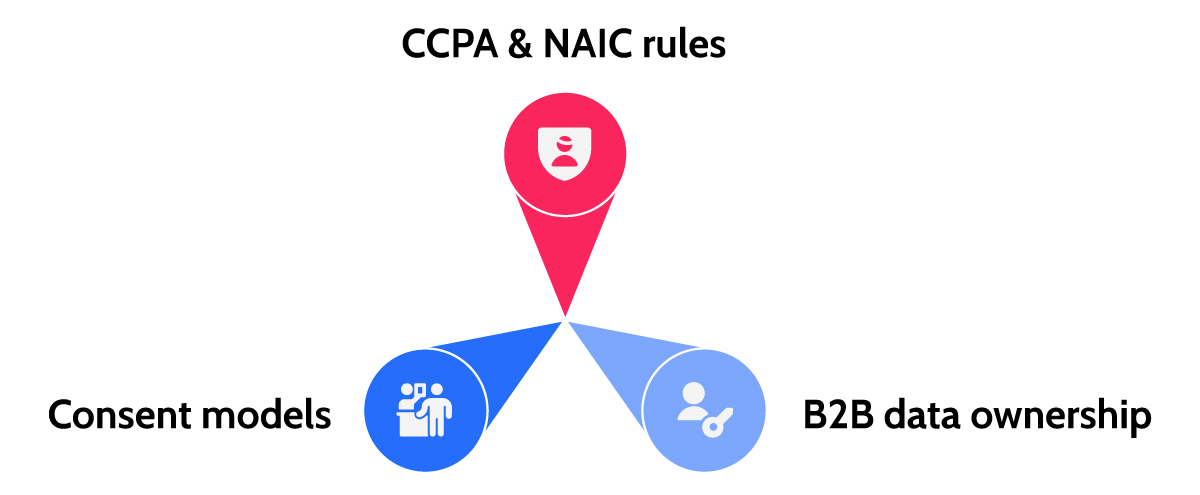“We’re not short on data. We’re short on value from it.”
That’s the quiet crisis facing insurance companies today.
For years, MGAs, carriers, and brokers across the U.S. have been investing heavily in data infrastructure. Data lakes, data warehouses, and lakeshores—whatever the metaphor—have been filling up fast. Yet, despite this influx of digital assets, most back-office operations still run like analog machines.
In a market where margins are tight and the appetite for differentiated growth is high, the next frontier isn’t selling more policies. It’s extracting measurable dollar value from the data that already exists—deep in the back office.
The Data Lake Delusion
Building a data lake is often celebrated as a sign of digital maturity. But here’s the uncomfortable truth: Most insurance data lakes are just swamps—vast, unstructured collections of data with no commercial strategy tied to them.
According to a Deloitte study, up to 70% of back-office data in U.S. insurance firms is never used in any decision-making or revenue-linked process. Think about that: customer call logs, claims notes, endorsement histories, mid-term policy changes—all sitting idle while the front office pushes for sales growth.
If data is the new oil, we’ve been too busy drilling and not nearly focused enough on refining and selling.
From Operations to Opportunity: Redefining the Back Office
Let’s break a myth: The back office isn’t just a cost centre. With the right monetization mindset, it can become a revenue enabler.
Here’s how:
Claims Operations
Identify patterns in triage data to proactively detect subrogation opportunities—potentially recovering millions in missed claims.
Underwriting Support
Use historical policy change data to flag cross-sell opportunities for commercial clients—before the next renewal cycle.
Billing & Payments
Analyse premium delinquency trends and introduce tiered payment models for credit-worthy customers—improving cash flow.
Reinsurance Negotiations
Leverage decades of risk exposure data to renegotiate reinsurance treaties with favourable terms.
This isn’t about AI or machine learning. It’s about mining what you already have with a clear lens of profitability.
Introducing: The Data-to-Dollar Maturity Curve
Every insurance business sits somewhere on this curve:
| Stage | Description | Revenue Link |
| 1. Reactive Storage | Storing everything “just in case” | None |
| 2. Organized Visibility | Structured data, dashboards available | Operational awareness |
| 3. Actionable Triggers | Workflow rules and alerts based on data | Process efficiency |
| 4. Monetized Use Cases | Claims recovery, pricing adjustments | Direct cost savings/revenue |
| 5. External Ecosystems | Selling or sharing data with partners | New revenue streams |
Most U.S. insurers are stuck at Stage 2 or 3. To unlock Stage 4 and 5, you don’t need new tools—you need a new mindset.
Why Data Monetization Often Fails?
Even well-funded insurers struggle to monetize data. Why? Here are 3 reasons:
- No Commercial Ownership
- IT stores data. Ops use it. But no one owns it from a revenue perspective.
- KPI Mismatch
- Teams are rewarded for operational efficiency, not data-driven value creation.
- Compliance Anxiety
- Fear of violating CCPA or NAIC guidelines blocks innovation, even in compliant use cases.
Solution: Appoint a cross-functional “Data Value Council” to bridge ops, compliance, and finance—and create incentives around data value, not just data governance.
Build Data Products, Not Just Dashboards
Most insurers have invested in BI tools. But data visualization ≠ data monetization.
The future lies in data products—modular, reusable datasets tied to specific business outcomes. For example:
- A “Broker 360” product that combines policy, loss, and communication data to predict broker retention value.
- A “Claims Leakage Detector” that continuously reviews payout trends and flags anomalies for audits.
- A “Risk Heatmap” sold to reinsurers to visualize regional exposure in near real time.
Each of these data products has internal value, and many have external resale potential—if packaged with care and legal clarity.
Guardrails: Compliance, Ethics, and Data Ownership
Before monetizing data, insurers must tread carefully:

- CCPA & NAIC rules apply to personal data. Anonymization and aggregation are essential.
- B2B data ownership must be clearly defined in broker, MGA, and carrier agreements.
- Consent models should be embedded in digital journeys to enable compliant data usage downstream.
Think of compliance not as a blocker—but as the blueprint that allows safe monetization.
Your Blueprint to Dollar Gains
Here’s a practical 5-step playbook to get started:
- Data Inventory – What back-office data do you have across systems?
- Value Mapping – Which datasets are high-cost, high-potential, or revenue linked?
- Productization – Create reusable data products with business owners.
- Packaging – Define internal and external use cases, outputs, and frequency.
- Commercialization – Link outcomes to metrics: cost saved, revenue earned, new margin created.
Conclusion: Treat Data Like a Product Line
We’ve been looking at back-office transformation as an efficiency play for too long. The reality is this:
Every carrier, MGA, and broker has a silent revenue stream buried in their data.
It’s time to activate it.
Just like you invest in product lines, you should invest in data pipelines, monetization strategies, and go-to-market teams for insights.
Start by identifying one overlooked dataset in your back office. Trace its potential. Create a small, contained use case.
Then scale it. And turn that data lake into a profit stream.

Mayank Raghuvanshi
Growth Specialist
